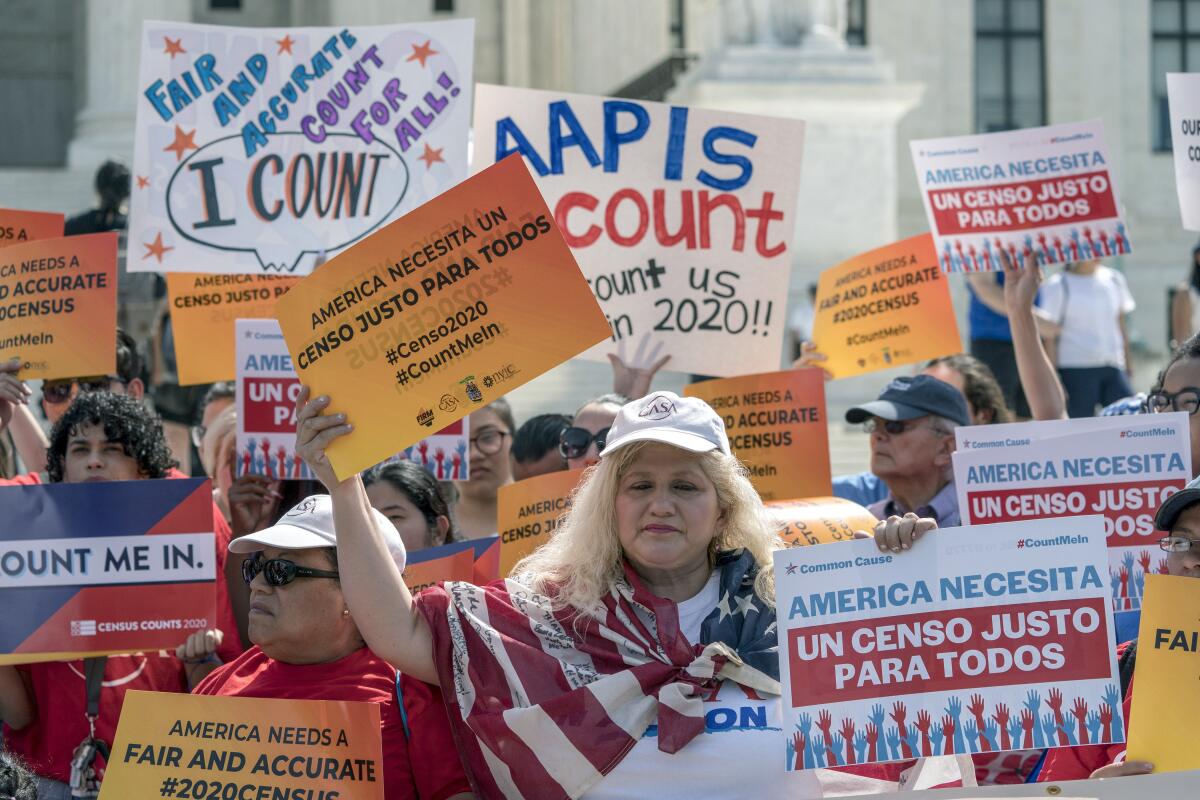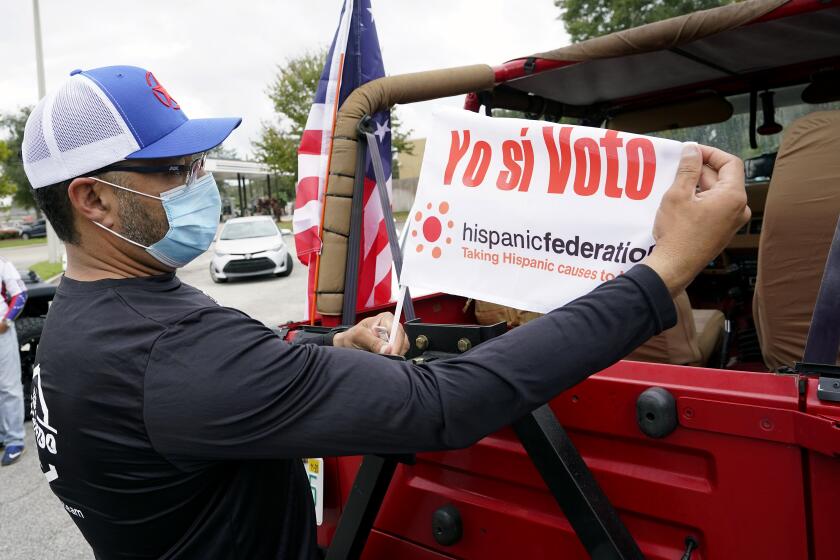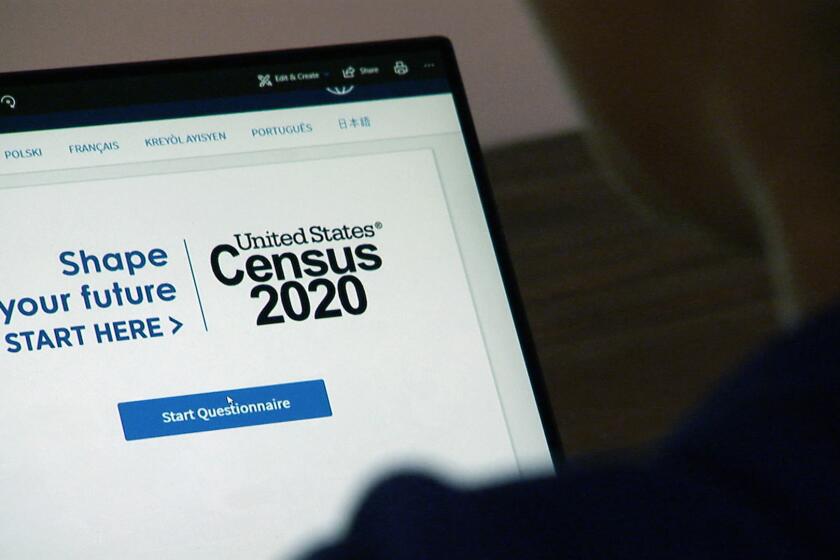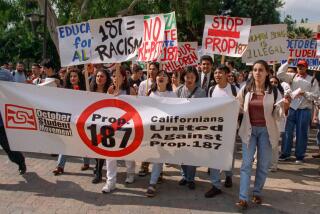Op-Ed: What can we do about the Latino undercount in the 2020 census?

On Thursday, the U.S. Census Bureau released a long-awaited report estimating the 2020 census undercount. Given the challenges of conducting a census in a pandemic, undercounts had been expected by many experts and the report bore them out: The overall total population was deemed accurate, but white people and Asian Americans were overcounted, and other groups were undercounted, especially Latinos. In fact, the undercount rate of Latinos â at 5% â represents a staggering 300% increase compared with the 2010 census.
This is not a new problem. Latinos have been a âhard to countâ population for decades. Analysts at the Census Bureau know their counts may miss those who have lower incomes, experience housing instability, speak languages other than English and distrust or fear the government â all qualities present in Latino communities, which include high percentages of immigrants and whose members face discrimination that can lead to economic disadvantage.
But while an undercount may have been expected, a 300% increase is not business as usual. Rather, it is an injustice and the culmination of a calculated attack on the census during Donald Trumpâs presidency.
The nation becomes more diverse, and redistricting gets real.
When President Trump was elected, the Census Bureau was in the process of changing the way it tabulates race and ethnicity. Drawing on more than a decade of research and with input from hundreds of civil rights and other organizations, the bureau had decided to allow respondents to identify their race and ethnicity in a âcheck all that applyâ format, and to include among the options Hispanic/Latino and Middle Eastern/North African. The revised format was shown in tests to improve response rates for all groups, and especially for Latinos.
In 2018, Trump and his secretary of Commerce, Wilbur Ross, halted the revision and demanded their own change in the 2020 census forms â a question to determine the citizenship of respondents. A lengthy legal battle ensued, ending in a 2019 ruling siding with Latino advocacy groups who had shown that a citizenship question would disparately affect Latino communities, dramatically depressing their participation and undermining the Constitutionâs mandate to count âthe whole number of persons in each state.â
The damage was done however. During 2019-2020, we conducted interviews with Latinos in two major metropolitan areas and found widespread distrust of the Trump administration that often led our interviewees to fear completing and submitting their census forms.
It shouldnât surprise anyone: What moved Latino voters in 2020 was grassroots organizing on local issues and needs, not narrow partisan agendas.
And now the result: A significant undercount of Latinos in the statistical base that governs political representation and many other functions of government. The 5% underrepresentation for a Latino population of more than 60 million could translate into at least $3 billion in lost funding for some towns and cities. The impact on political power is as profound. The undercount will likely mean fewer elected advocates for the kind of immigration and economic reforms that are central for Latino communitiesâ well-being.
In the end, the Trump administration got what it wanted. It undermined a burgeoning minority in the United States, falsifying the size and scale of the population and literally discounting them.
So where do we go from here? First, Robert L. Santos, the new director of the Census Bureau, can immediately adopt the revised race and ethnicity census question format so that all future research â including the interim surveys that supplement the decennial count â will allow Latinos to better identify themselves.
Next, Congress must establish a task force to examine the issue of Census Bureau integrity, with the goal of shielding the decennial count from overt political manipulation. The Trump administrationâs behavior proves that we need a set of legislative policies that protect and reinforce the bureauâs independence and scientific goals. The decennial count must never again be held hostage to presidential whims.
Finally, Latino advocacy and community groups must organize with others to petition and pressure state legislators to use the Census Bureauâs adjusted estimates as they set policy in the coming years.
A statistical tweak to 2020 Census data to protect respondents raises troubling questions about data accuracy and its effect on redistricting.
State and congressional redistricting based on the inaccurate count has already happened and canât be undone, but the adjusted figures can help to combat some of the effects of undercounting on the way funds are allocated.
The nonpartisan work of the Census Bureau can and must be protected. Ultimately, the undercounts in 2020 affected people of color â including those who identify as Latino, Black and American Indian. The errors represent a critical issue for our democracy. They make communities invisible and trigger losses that will be felt for generations to come.
G. Cristina Mora is an associate professor of sociology and the co-director of the Institute of Governmental Studies at UC Berkeley. She is the author of âMaking Hispanics: How Activists, Bureaucrats and Media Constructed a New American.â Julie A. Dowling is associate professor of sociology and Latin American and Latino Studies at the University of Illinois, Chicago. She is the author of âMexican Americans and the Question of Race.â She served on the U.S. Census Bureauâs advisory committee on race and ethnicity from 2014 to 2020.
More to Read
A cure for the common opinion
Get thought-provoking perspectives with our weekly newsletter.
You may occasionally receive promotional content from the Los Angeles Times.













